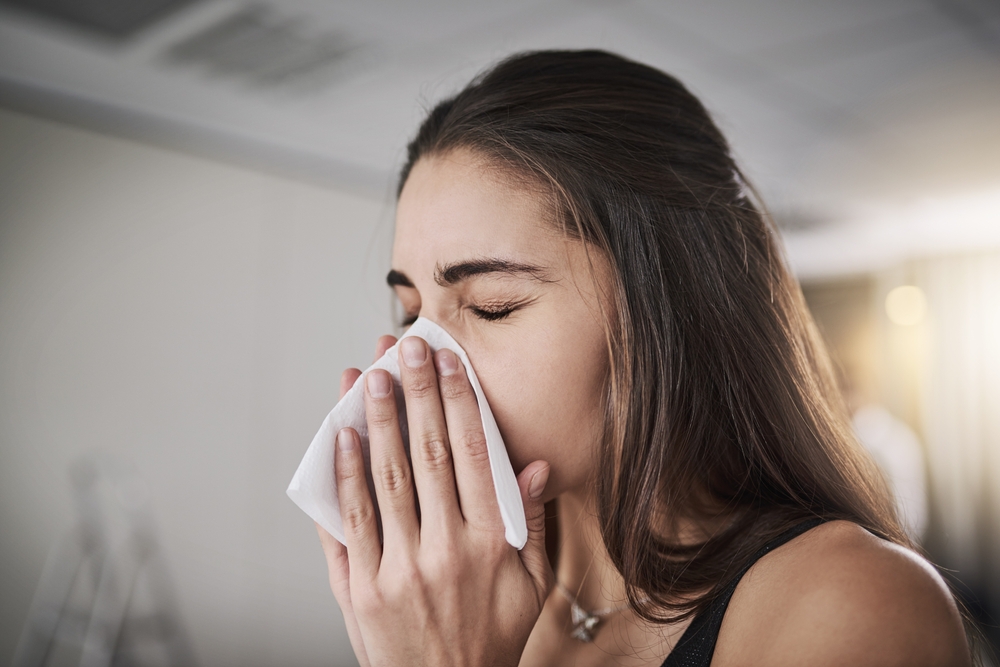Your nasal passages are busy producing mucus all day long, about a quart’s worth. While mucus plays a vital role in trapping harmful bacteria and keeping your airways moist, too much of it can lead to discomfort.
Normally, excess mucus mixes with saliva and slides down the throat unnoticed. However, when mucus production goes into overdrive, it can thicken and accumulate in the back of the throat.
What are signs of post-nasal drip?
Post-nasal drip primarily affects the throat. The surplus mucus can cause food and beverages to feel “stuck” in the throat.
Additionally, it may trickle into the larynx and air passages, resulting in symptoms such as:
- Hoarseness
- Coughing
- Sneezing
- Frequent throat clearing
What are potential causes of post-nasal drip?
Post-nasal drip can stem from either excessive mucus production or an inability to clear it away effectively. Given its diverse origins, various factors can contribute to this condition. The consistency of the mucus can offer insight into its underlying cause.
Thin Mucus
Thin and transparent secretions typically don’t prompt much throat clearing but can lead to coughing and hoarseness.
Common triggers for excessive thin mucus include:
- The flu or common cold
- Allergies
- Cold weather
- Hormonal fluctuations
- Certain medications (e.g., birth control, high blood pressure medication)
Thick Mucus
Thicker secretions are often more prevalent in winter due to dry indoor air and heating systems. This type of mucus issue tends to result in frequent throat clearing and difficulty swallowing.
Potential causes of thick mucus include:
- Sinus infections
- Nasal allergies
- Food allergies
Green or yellow mucus may indicate an underlying issue, such as a sinus infection, that requires medical attention.
What are treatment options for post-nasal drip?
Given the multifaceted nature of post-nasal drip, treatment approaches vary. Bacterial infections may respond to antibiotics, but viral infections such as the flu or common cold do not. In cases of colds, flu, allergies, or sinusitis, antihistamines and decongestants can help alleviate symptoms.
Tips for managing post-nasal drip at home
In addition to medical treatments, lifestyle adjustments play a crucial role in managing post-nasal drip.
Lifestyle changes that can help in relieve symptoms and promote nasal health include:
- Hydration: Drinking plenty of water throughout the day can help thin out mucus, making it easier to expel.
- Humidification: Using a humidifier in your home, especially during dry winter months, can help keep the air moist and prevent mucus from becoming too thick.
- Avoiding irritants: Avoid exposure to cigarette smoke, strong perfumes, and other irritants that can exacerbate nasal congestion and inflammation.
- Nasal irrigation: Regularly rinsing your sinuses with a saline solution, such as a NetiPot, can help clear out mucus and minimize inflammation.
- Elevation of your head: Laying with the head elevated can prevent mucus from accumulating in the back of your throat, reducing the sensation of post-nasal drip.
- Allergy management: If allergies are contributing to your post-nasal drip, taking steps to minimize your exposure to allergens, such as dust mites, pet dander, and pollen, can help alleviate symptoms.
- Steam inhalation: Inhaling steam from a bowl of hot water or taking a hot shower can help loosen mucus and relieve nasal congestion.
- Dietary changes: Some individuals find that certain foods, such as dairy products or spicy foods, can worsen post-nasal drip. Experimenting with your diet to identify and avoid trigger foods may help reduce symptoms.
For personalized treatment and proper diagnosis, consulting an Ear, Nose, and Throat specialist is highly advisable.
Find an ENT specialist near you to schedule an evaluation and explore treatment options.



